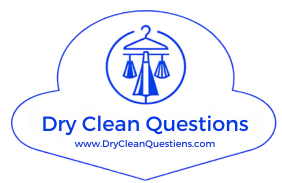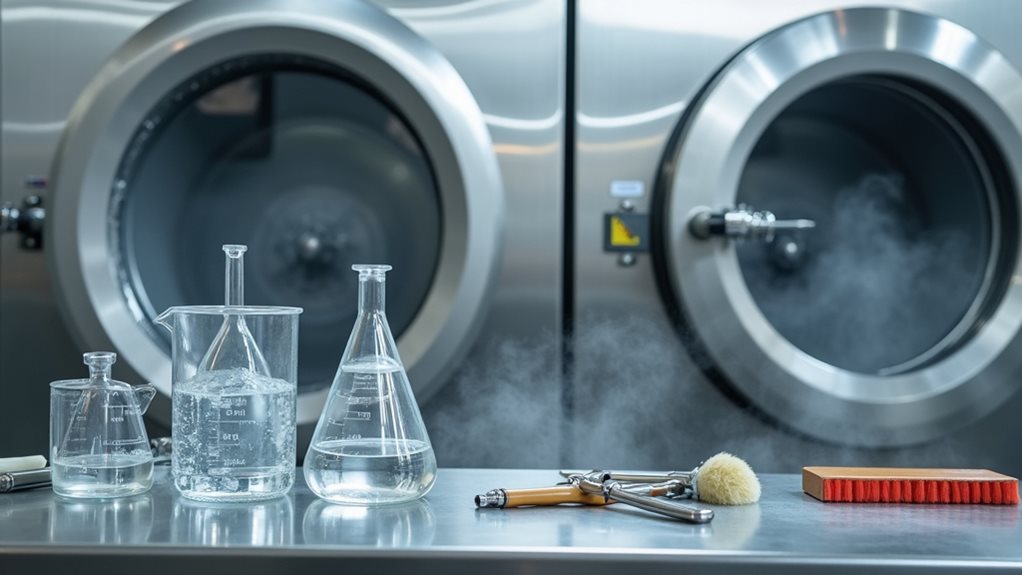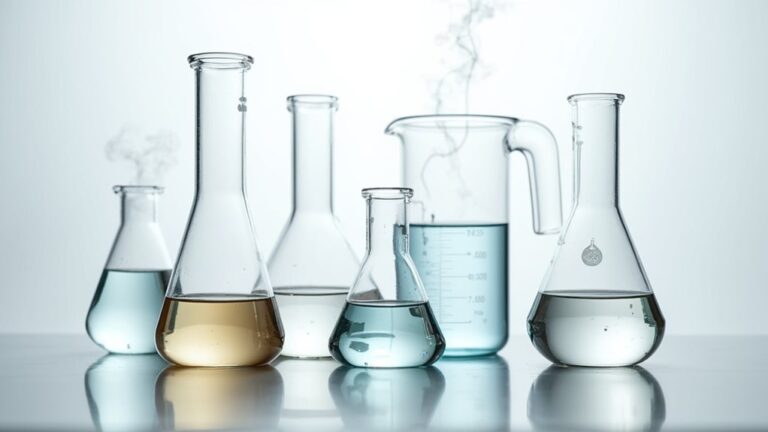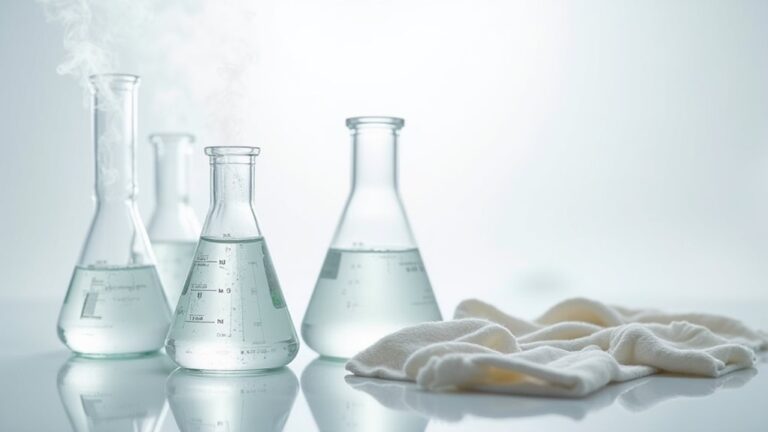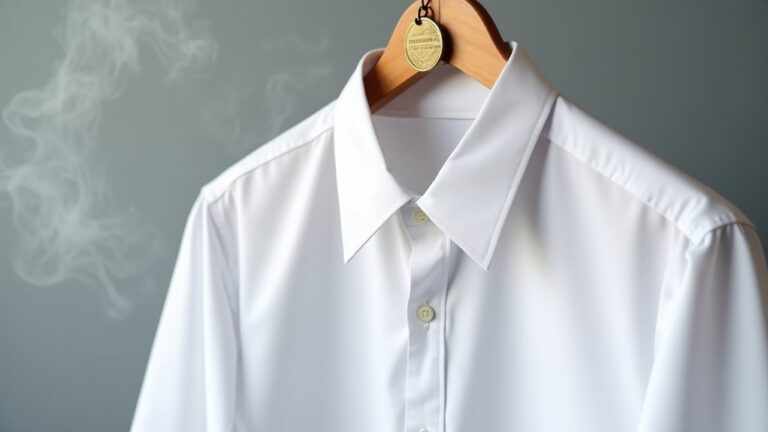When you drop off your favorite silk blouse or wool suit, dry cleaners primarily use perchloroethylene (perc), a powerful solvent that dissolves oil-based stains water simply can’t touch. They’re increasingly switching to eco-friendly alternatives like silicone-based solvents and biodegradable hydrocarbon solutions that’re gentler on both fabrics and the environment. Pre-treatment chemicals target specific stains, while steam and heat applications remove wrinkles and evaporate residual solvents, transforming your garments into crisp, wearable pieces through quality-controlled processes you’ll appreciate understanding better.
The Primary Solvents Used in Professional Dry Cleaning
When I first started learning about dry cleaning, I honestly thought it was just regular washing without water – boy, was I wrong! 😅
The heart of professional dry cleaning lies in choosing the right solvent, and trust me, there’s a whole science behind it that I wish someone had explained to me years ago when I ruined my favorite silk blouse.
Perchloroethylene remains the gold standard in the dry cleaning process, offering unmatched effective stain removal, especially for stubborn oil-based marks.
However, many cleaners now adopt eco-friendly alternatives like hydrocarbon solvents, silicone-based solvents, liquid carbon dioxide, and glycol ethers, each bringing unique cleaning capabilities while prioritizing environmental safety and fabric care in professional dry cleaning operations.
Understanding why water cannot be used for certain garments helps explain the necessity of these specialized solvents in maintaining fabric integrity and preventing damage to delicate materials.
How Perchloroethylene Works to Remove Stains and Dirt
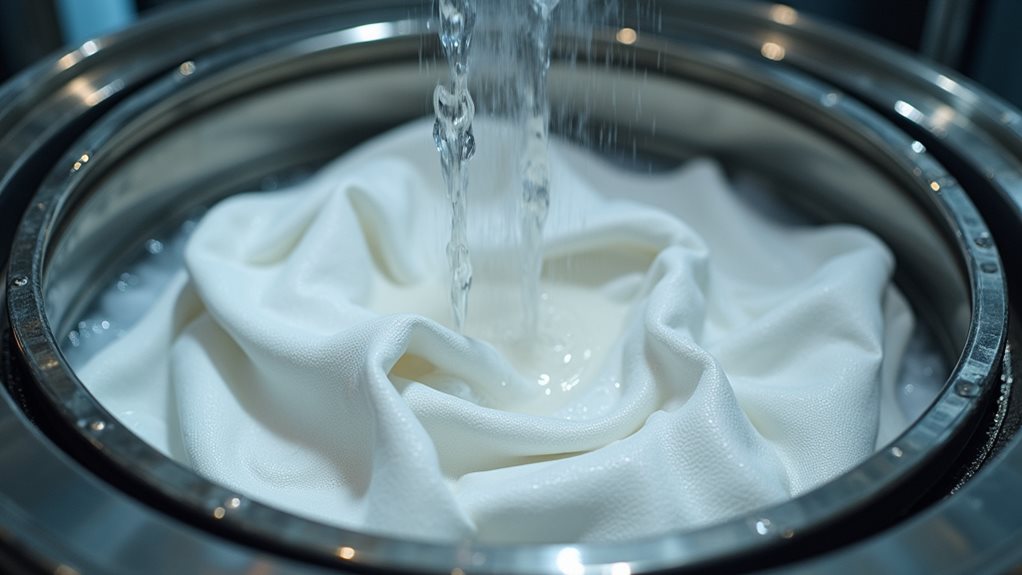
Now that we’ve covered the main solvents used in professional dry cleaning, let’s explore exactly how perchloroethylene works its magic on those pesky stains that make us panic.
This effective solvent tackles your garments through a fascinating four-step process:
- Penetration – Perc seeps deep into fabric fibers, reaching stains that water simply can’t touch.
- Dissolution – It dissolves oil and grease stains without causing fabric distortion to delicate fabrics.
- Suspension – The solvent lifts dirt particles, keeping them floating for easy removal.
- Agitation – Specialized dry cleaning machines improve cleaning effectiveness through gentle movement.
The dry cleaning process becomes incredibly efficient because perc evaporates quickly, preventing damage while thoroughly removing stains.
Perc became the industry standard due to its superior cleaning properties, non-flammability, and ability to be recycled within the cleaning process.
However, environmental concerns have prompted many cleaners to seek alternatives 🌱.
Eco-Friendly Alternatives to Traditional Cleaning Chemicals

You’ve probably noticed how the dry cleaning industry has been shifting toward greener solutions, and honestly, it’s about time we’d safer options that don’t make us worry about what chemicals are touching our favorite clothes.
Three standout alternatives have emerged as game-changers: Green Earth silicone solvent offers a biodegradable, non-toxic approach that’s gentler on both fabrics and the environment, while professional wet cleaning methods prove that sometimes water and specialized detergents can work magic on even the most delicate garments.
Hydrocarbon biodegradable options round out this eco-friendly trio, giving you cleaner clothes without the environmental guilt that used to come with traditional perc-based cleaning 🌱.
These modern alternatives maintain the same effectiveness as traditional methods at dissolving oils and grease that water-based washing simply cannot tackle.
Green Earth Silicone Solvent
The shift toward Green Earth silicone solvent represents one of the most promising developments I’ve witnessed in eco-friendly dry cleaning, and honestly, it’s about time we’d a solution that doesn’t make us choose between clean clothes and a clean conscience.
This biodegradable marvel, derived from sand, delivers gentle cleaning properties that’ll make your delicate fabrics sing with gratitude.
Here’s what makes this eco-friendly champion so remarkable:
- Non-toxic and non-flammable composition guarantees safer handling
- Zero harmful residues left on your precious garments
- Effective stain removal without harsh chemical warfare
- Reduced environmental impact through sustainable practices
You’ll find more dry cleaners embracing this silicone-based solution, responding to our collective demand for responsible garment care that doesn’t compromise our planet’s wellbeing.
For those seeking additional maintenance options, steam cleaning provides another chemical-free method that uses high-temperature water vapor to refresh garments between professional cleanings.
Professional Wet Cleaning Methods
While traditional dry cleaning has dominated the garment care industry for decades, professional wet cleaning emerges as a game-changing alternative that’ll revolutionize how you think about caring for your most cherished pieces.
You’ll discover this eco-friendly alternative uses biodegradable detergents with advanced machinery that carefully controls water temperature and agitation, protecting delicate fabrics while maintaining garment integrity.
Unlike traditional dry cleaning methods that rely on harsh chemicals, this process eliminates health risks associated with toxic solvents, markedly reducing environmental impact.
The sophisticated equipment prevents shrinkage and color loss, making it perfect for those vintage pieces you’ve been afraid to clean.
Modern dry cleaners are also adopting safer alternatives like hydrocarbon solvents, liquid silicone, and carbon dioxide cleaning systems to address environmental concerns while maintaining effective stain removal.
It’s sustainable garment care that actually works!
Hydrocarbon Biodegradable Options
As environmental consciousness reshapes our daily choices, hydrocarbon biodegradable solvents have emerged as the intelligent compromise between effective cleaning and planetary responsibility.
You’ll find these petroleum-derived alternatives revolutionizing the dry cleaning process while being notably less aggressive on your favorite fabrics than traditional chemicals like PERC.
These eco-friendly biodegradable options offer impressive advantages:
- Superior safety profile with higher flashpoints and reduced toxicity
- Exceptional fabric compatibility for delicate silk and wool garments
- Effective cleaning power that dissolves oil and stains without damage
- Minimal environmental impact through biodegradable formulations
When you choose cleaners using hydrocarbon solvents like DF2000, you’re supporting industry initiatives that prioritize both your garments’ longevity and our planet’s wellbeing—a win-win situation! 🌱
Another emerging alternative gaining traction in the industry is liquid CO2, which provides an even more environmentally friendly approach to professional garment cleaning.
The Role of Pre-Treatment Solutions in Stain Removal
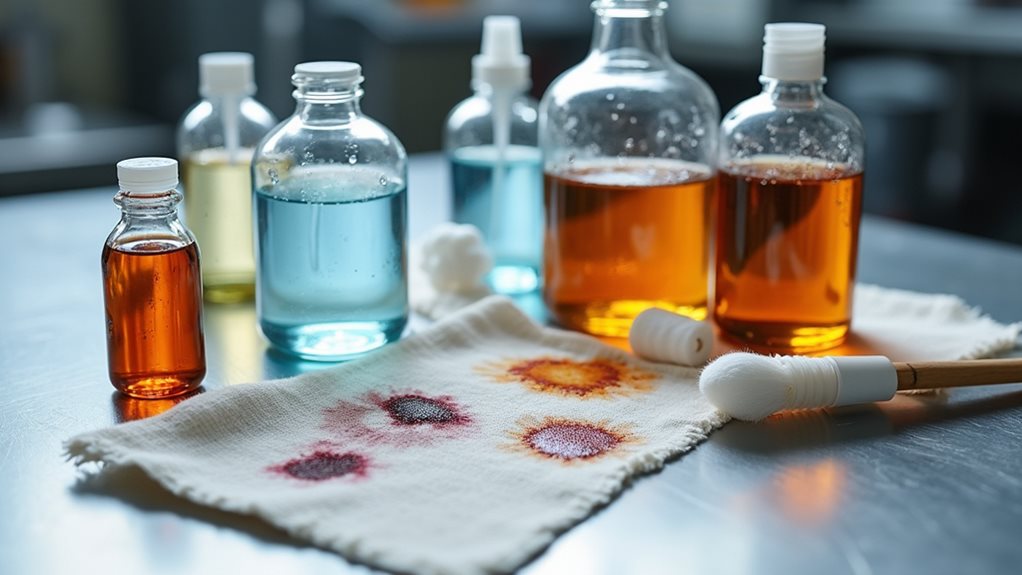
You know that sinking feeling when you discover a mysterious stain on your favorite silk blouse, and you’re wondering if it’s destined for the donation pile?
Here’s where specialized stain treatment methods become your garment’s best friend, because pre-treatment chemical solutions can tackle everything from that sneaky salad dressing splatter to the protein-based mystery spots that seem to appear out of nowhere.
I’ve learned the hard way that these targeted solutions work like little molecular warriors, breaking down stubborn stains before the actual dry cleaning cycle even begins, which means your clothes get a fighting chance at looking fabulous again.
While dry cleaning excels at removing oil-based stains and grease that water-based washing can’t handle, certain challenging marks like ink or paint may require specialized techniques or could prove more difficult to remove completely.
Specialized Stain Treatment Methods
Three key factors determine whether that mysterious stain on your favorite blazer becomes a permanent reminder of last week’s dinner disaster or completely disappears like it never happened.
During the pre-treatment stage, specialized stain treatment solutions work like tiny detectives, identifying and targeting specific culprits. Your dry cleaner’s garment inspection reveals which solvents will tackle those stubborn oil-based stains without compromising delicate fabrics like linen or silk.
Here’s how professionals approach different stain challenges:
- Oil-based stains get perchloroethylene or eco-friendly alternatives
- Protein stains receive enzyme-based treatments
- Tannin stains (coffee, wine) need acidic solutions
- Dye transfer requires specialized color-safe bleaching agents
This targeted approach dramatically improves cleaning effectiveness while protecting your garments’ integrity, guaranteeing your silk blouse doesn’t become an expensive cleaning casualty during stain removal. The success of removing any stain ultimately depends on how long it has been present, the fabric material, and whether previous cleaning attempts have already set the stain permanently.
Pre-Treatment Chemical Solutions
Behind every successful stain removal story lies a carefully chosen pre-treatment chemical solution, working quietly in the background like that reliable friend who always knows exactly what to say when you’re in crisis.
These specialized solvents target specific stains before your garment enters the main cleaning process, and honestly, they’re game-changers for boosting effectiveness.
When you’re dealing with oil-based stains, perchloroethylene works wonders, while eco-friendly alternatives like hydrocarbon solvents handle delicate fabrics beautifully.
The magic happens when these solutions penetrate fabric fibers, breaking down contaminants so thoroughly that you’ll often reduce cleaning cycles considerably.
Trust me, proper pre-treatment chemical solutions don’t just improve cleaning results—they’ll save your favorite pieces from becoming casualties of stubborn stains.
Modern silicone-based solutions offer an even gentler approach for the most delicate materials like silk and wool that require extra care during the cleaning process.
Steam and Heat Applications During the Cleaning Process
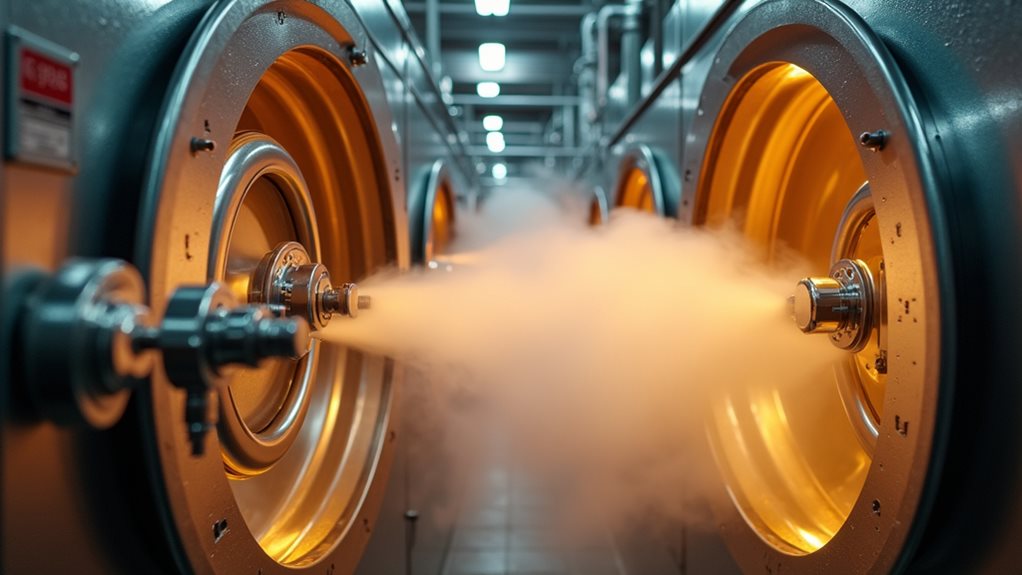
While most people think dry cleaning is just about dunking clothes in chemical solvents, the real magic happens when steam and heat enter the picture, transforming wrinkled, lifeless garments back into crisp, wearable pieces that look like they just stepped off a department store rack.
Here’s how steam and heat work their wonders during the dry cleaning process:
The professional combination of precisely controlled steam and heat transforms ordinary garments into crisp, department store-quality clothing.
- Steam pressing relaxes fabric fibers at high temperatures, eliminating creases and restoring your garment’s original structure.
- Heat application during the drying phase evaporates residual solvents, guaranteeing clothes return completely dry.
- Steam treatment helps remove stubborn stains by loosening embedded dirt and grime.
- Controlled temperature protects delicate fabrics while preserving quality and extending lifespan.
Following the initial cleaning cycle with specialized solvents, professional dry cleaners use these steam and heat techniques to complete the restoration process.
Trust me, this careful balance of steam and heat is what separates professional cleaning from home washing!
Quality Control Measures for Solvent Effectiveness and Safety
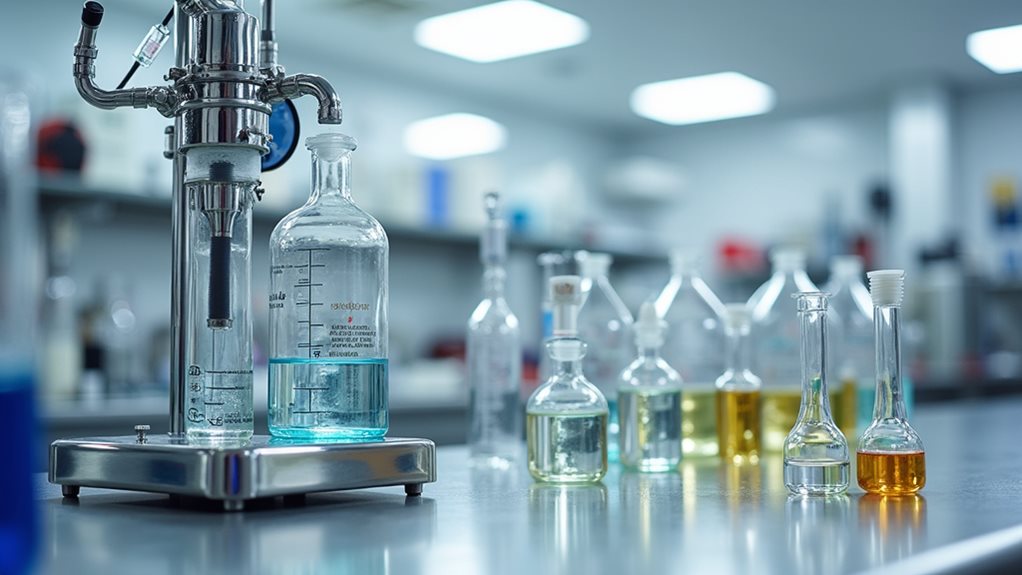
Once I watched a dry cleaner ruin an expensive silk blouse because they’d been using contaminated solvent for weeks without realizing it, and that’s when I truly understood why quality control measures aren’t just bureaucratic paperwork—they’re the invisible guardians protecting your favorite clothes from chemical disasters.
Professional facilities test each batch of solvents used to verify purity levels meet safety standards, because impurities can destroy cleaning effectiveness and damage delicate fabrics.
Staff training becomes vital here, teaching employees how to monitor solvent quality and recognize when something’s off.
Environmental regulations also drive these protocols, requiring careful tracking of solvent waste to protect both garment care quality and public health—making your clean garments both beautiful and responsibly processed.
